Apologetics
Apologetics cannot prove that the Church is true, but it can show you answers that may help you in knowing the Church is true, especially through personal revelation. Our group called FIRM, along with FAIR, Book of Mormon Central, The Interpreter, More Good Foundation etc., are similar organizations made up of great spiritual people who love the Lord and the Book of Mormon. All claim to have answers to many challenging or even difficult gospel questions that may encourage or assist people to better understand the truthfulness of The Church of Jesus Christ of Latter-day Saints. No Apologetic organization speaks in behalf of, or for the Church however. Doctrine in the Church only comes from the Prophet and Apostles who all organizations support.
The purpose of LDS Apologetics is to provide solid or well-reasoned information that makes sense in answering supposed church related difficult questions, so that a conclusive decision of the truth of the Gospel and Church can be determined by study and prayer through the Spirit.
I will share my well-reasoned information with you here, and let you decide the truth for yourself. Make prayer and scriptures of the utmost importance in your conclusions.
Below is a very simple list of items the FAIR Apologists use to validate their belief in a Mesoamerican setting for the Book of Mormon. I will share with you my opinion on each of their items on the list, about why a Heartland Model seems a better idea.
Written Language
I have spoken with many Historians and Scholars who believe the Mesoamerican Theory. One of their main reasons they normally tell me that Mesoamerica makes sense, and Heartland Models don’t, is the written language of the Mayans and Olmecs and other ancient civilizations, is so critically important to any theory of the Book of Mormon, and the Heartland clearly shows no ancient written records about ancient people in North America.
So, at the end of my pushback and response about the beginning items below, I will share why I feel the remaining Lamanites of the Heartland would never have a written language and FAIR may actually validate our Heartland theory, by suggesting a written language is so important.
FAIR comments in black, my comments in RED.
Question: Is it possible that the Nephites and Lamanites are associated with the pre-Classic Maya, and the Jaredites are associated with the Olmec?
I ask, Is it possible that the Nephites and Lamanites are associated with the Hopewell Culture, and the Jaredites are associated with the Adena?
Latter-day Saints sometimes associate the Nephites and/or Lamanites with the Maya, and the Jaredite civilization with the Olmec. There is circumstantial evidence to support this:
- The general consensus among LDS scholars that Book of Mormon events are likely to have occurred in Mesoamerica. This is the location of the ancient Maya and Olmec civilizations. The general consensus among LDS conservatives that Book of Mormon events are likely to have occurred in North America. This is the location of the ancient Hopewell and Adena civilizations.
- The fact that the Maya and Olmec civilizations are in the proper relative locations and approximate time periods required by the Book of Mormon (A detail, by the way, which Joseph Smith could not possibly have known). You can see the appropirate time frames below and compare them.
Mayan Preclassic period (c. 2000 BC – 250 AD)
Mayan Classic period (c. 250–900 AD)
Mayan Postclassic period (c. 950–1539 AD)
Olmec Formative period (c. 1600 BC – 400 BC)
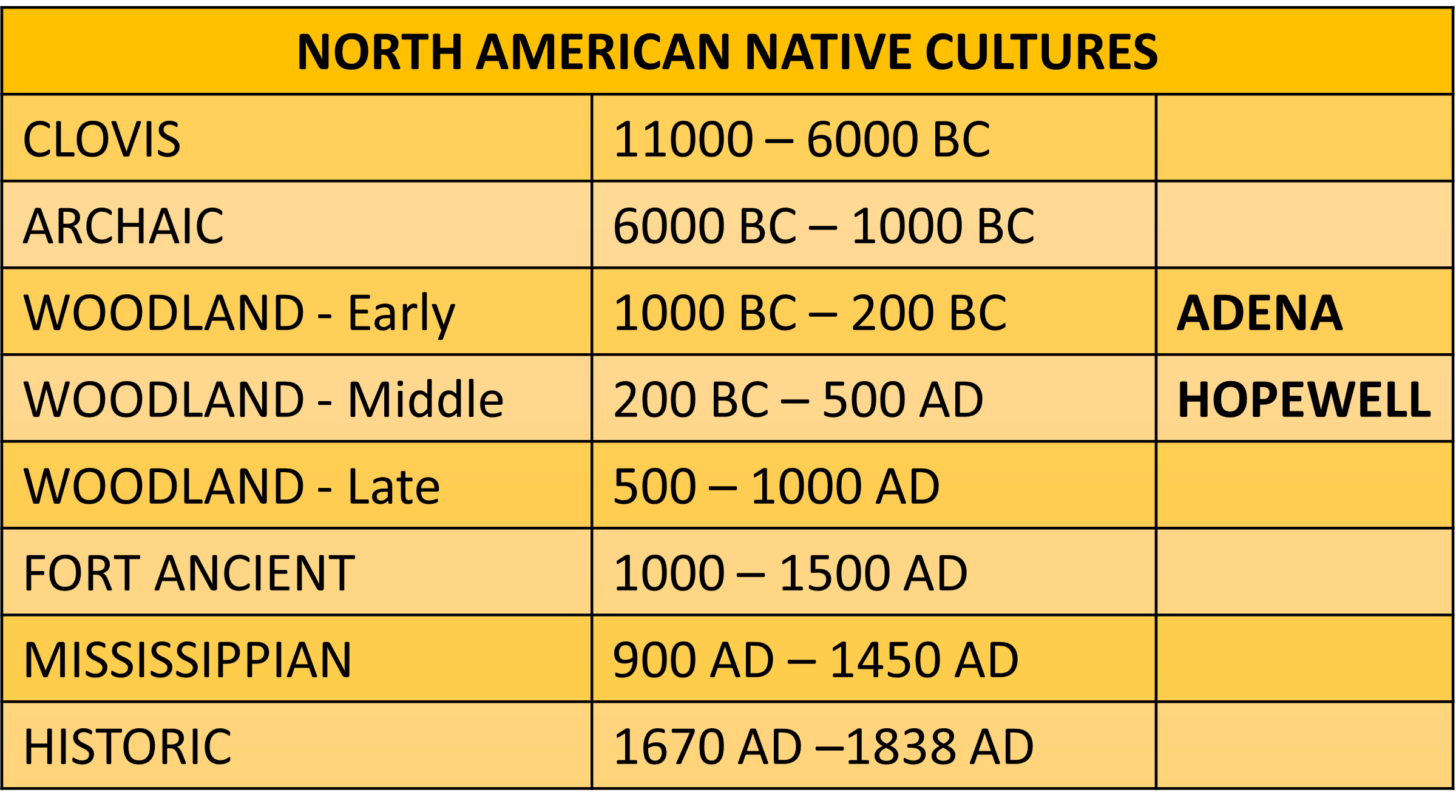
 The cover of the 2008 Gospel Doctrine manual (Book of Mormon study guide [left]) shows the painting Christ with Three Nephite Disciples, by Gary L. Kapp. This painting portrays Jesus and the three disciples standing in front of a Mesoamerican pyramid.
The cover of the 2008 Gospel Doctrine manual (Book of Mormon study guide [left]) shows the painting Christ with Three Nephite Disciples, by Gary L. Kapp. This painting portrays Jesus and the three disciples standing in front of a Mesoamerican pyramid.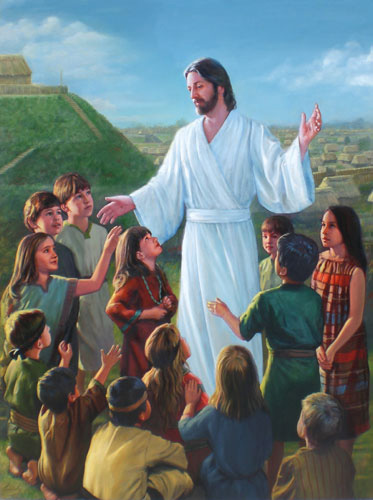 So pictures chosen by FAIR and Book of Mormon Central Historians who chose these pictures is all it takes to prove where the Book of Mormon events happened? Here is my candidate for a picture from the Heartland of the Savior standing next to large mound possibly in Ohio by David Lindsley (right)
So pictures chosen by FAIR and Book of Mormon Central Historians who chose these pictures is all it takes to prove where the Book of Mormon events happened? Here is my candidate for a picture from the Heartland of the Savior standing next to large mound possibly in Ohio by David Lindsley (right) Artwork that has appeared in Church publications and buildings for many years has depicted Book of Mormon events occurring in a Mesoamerican setting.
Artwork that has appeared in Church publications and buildings for many years has depicted Book of Mormon events occurring in a Mesoamerican setting.- One well-known painting of Christ appearing to the Nephites shows a Mesoamerican pyramid in the background, and to the far left, one of the “elephant-like” snouts associated with masks of the Mayan rain-god Chac.
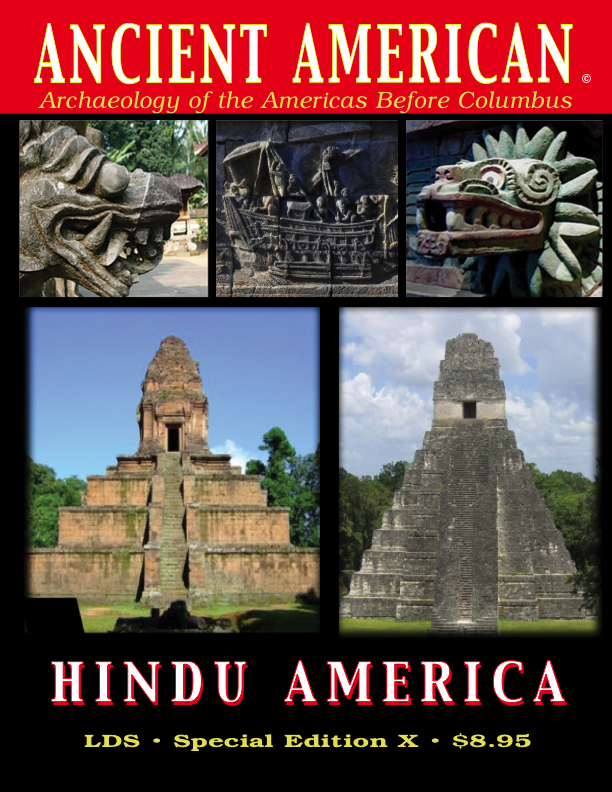 Did you know Elephants have not existed in Mesoamerica? They do appear in India (picture right) however, which is where these Mesoamerican style temples are patterned after. There is historical proof that Elephants and Mastodons lived in North America.
Did you know Elephants have not existed in Mesoamerica? They do appear in India (picture right) however, which is where these Mesoamerican style temples are patterned after. There is historical proof that Elephants and Mastodons lived in North America.- A famous set of 12 paintings by artist Arnold Friberg was included in most copies of the Book of Mormon for many years. These paintings depict Book of Mormon events as occurring in Mesoamerican settings.
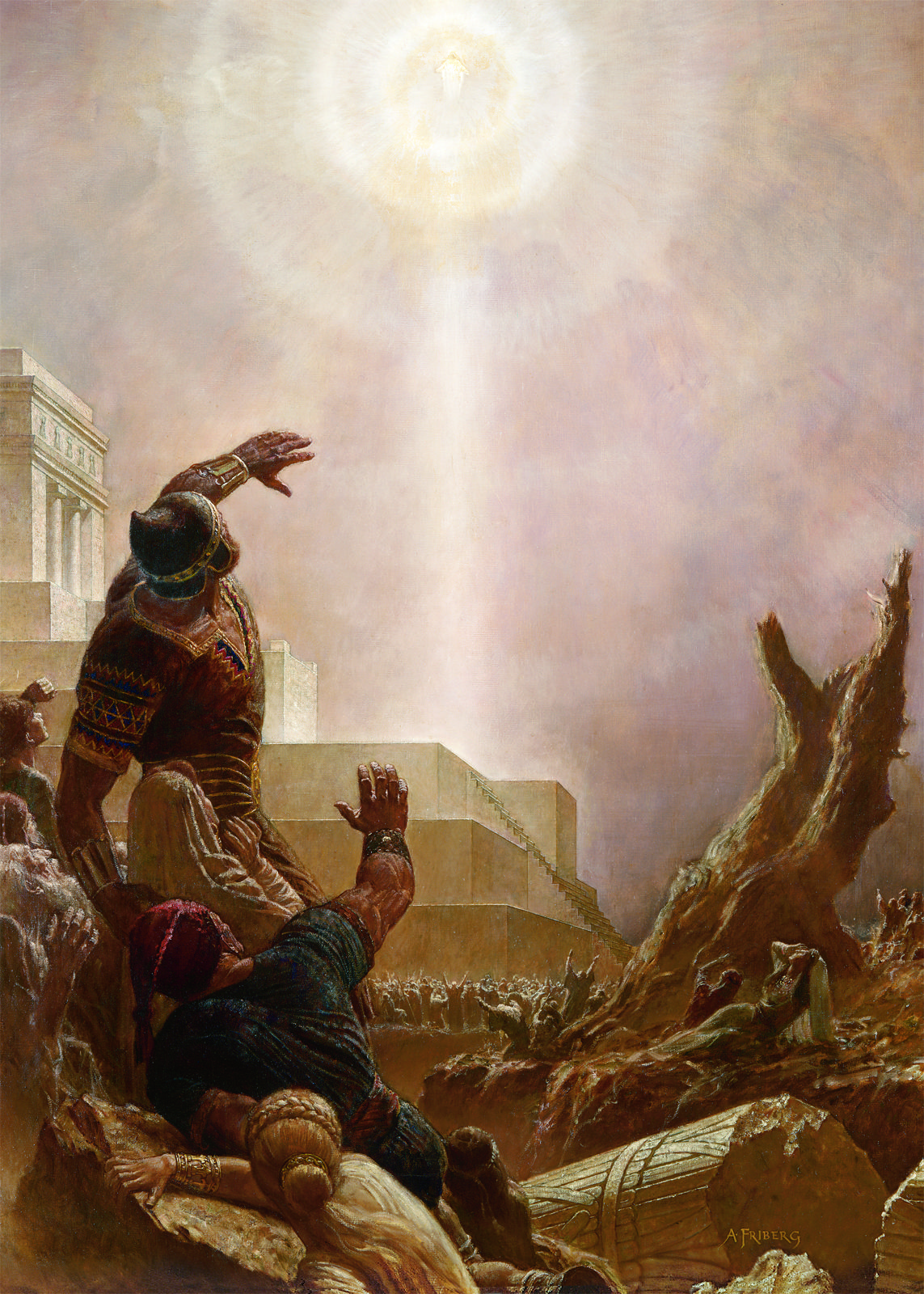 I love these paintings of Friberg’s. I have a question? Why does one of Friberg’s painting (left) show the Savior appearing to stone temples in Mesoamerica and then another one (right) shows Mormon’s final words to his son Moroni in a New York
I love these paintings of Friberg’s. I have a question? Why does one of Friberg’s painting (left) show the Savior appearing to stone temples in Mesoamerica and then another one (right) shows Mormon’s final words to his son Moroni in a New York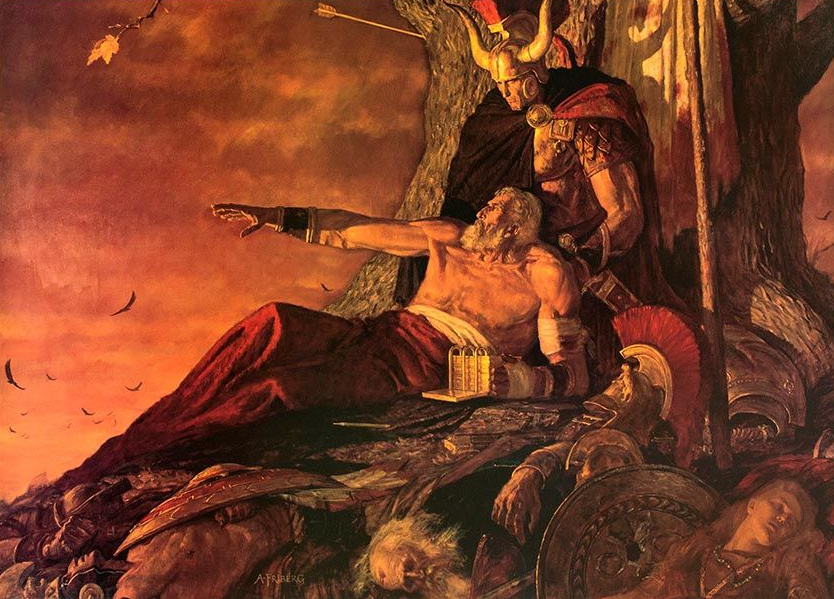 setting? So the final battles of the Nephites were actually in New York near the Hill Cumorah? That is awesome!
setting? So the final battles of the Nephites were actually in New York near the Hill Cumorah? That is awesome!
Comments by FAIR continue below
- The Church produced film “The Testaments” depicts Book of Mormon events as occurring in a Central American setting, with Christ appearing in front of a classic Mayan pyramid. Do you know who produced the film “Testaments”? Kieth Merrill who is wonderful and lives in California. I have a quote from him you will love, how repentant Kieth feels after doing the Book of Mormon movie in the wrong geography.

Art by Val Chadwick Bagley. Order the book here - “Book of Mormon tours” which take interested members to “see the lands of the Book of Mormon” in Mesoamerica. Wow, all you need is tour guides to take you to Book of Mormon lands and that validates that if you take them to Mesoamerica, that makes it the correct place that Book of Mormon events happened? Now you tell me! Rod Meldrum and Wayne May have been doing that for years. Why not join Rod Meldrum on his next tour in North America where not only the Book of Mormon events happened, but also the exact same place the LDS Church History Events happened on the same trip. It’s a two-fer in the Heartland. See Rods July 2023 tour here: and his June 2023 tour here.
- The Maya and the Olmec have a written language—a requirement for Book of Mormon peoples, who kept records. Mesoamerica is the site of the only literate pre-Columbian population.
It is easy, therefore, to see why Latter-day Saints typically associate the Nephites or Lamanites with the Maya.” Source FAIR at the link below: https://www.fairlatterdaysaints.org/answers/Question:_Is_it_possible_that_the_Nephites_and_Lamanites_are_associated_with_the_pre-Classic_Maya,_and_the_Jaredites_are_associated_with_the_Olmec%3F
Written Language- “Thee” Question from FAIR
All the following text is from myself, whether in black or red text.
Now I will address this last difficult question that FAIR raises. I saved it for last because it is FAIR’s, Book of Mormon Central’s, The Interpreter’s and Meridian Magazine’s best and most impactful reason that Meso is correct and Heartland is wrong.
By the way I first say this. The Constitution of the United States was written for God’s purposes here in the Promised Land of the United States and not in Guatemala, or Chile, or Mesoamerica. (Just saying)
My Answer
A written record in ancient civilization proves the Jaredites and Nephites were righteous journal keeping people at one time. The Jaredite 24 plates and the Nephite large and small plates validate that God’s people were faithful record keepers.
Are there any written records that have been discovered of the Mayans written before 1550 AD? Are there any written records of the Hopewell or Lamanites written before the same date? No to each answer. So we only have oral traditions before 1550 AD correct? (Source below)
Why were the unrighteous Lamanites constantly trying to find and steal the righteous written records of the Nephites, attempting to destroy them as records, and plunder them for gain? I include the Lamanites just as righteous as the Nephites at times, and at the end of civilization the Lamanites were even more righteous than the Nephites. Both groups however turned to evil in 385 AD.
Today’s ancient people of North America who were the original Nephites, did not keep written records as they were previously Lamanites, who did not keep records at all. Ancient Mayans did not keep records either before 1550 AD. When a Mesoamerican says the Mayan had a written record and the North American Indian did not, they are not necessarily speaking full truth. The Mayans had a written record after 1550 and the Iroquois had a written record after 1820. (See sources later)
The traditions of Nephites was about writing things of God on plates of ore to keep records for their posterity and Lamanite brethren. If fact written records were so important to God’s people, Lehi had the Brass Plates retrieved from Jerusalem, and every prophet of God after, kept records as we know. Lamanites or people of the world did not normally keep records but maintained oral traditions.
It also is very significant that the language of the Nephites and Lamanites would have to be patterned after Phoenician or Hebrew since Lehi was a Hebrew and descendant of Manasseh through Joseph. “And Aminadi was a descendant of Nephi, who was the son of Lehi, who came out of the land of Jerusalem, who was a descendant of , who was the son of who was into Egypt by the hands of his brethren.” Alma 10:3
Hebrew
So the name of Jehovah in Hebrew is Yod hey Vau, “A name representing the name of the Creator’s Son, pronounced in the Ojibwa tongue (reading the cuneiform characters from right to left) as “Yod-hey-vau”.” Wayne May Mystic Symbol blog here:
“Uto-Aztecan languages are found almost entirely in the Western United States and Mexico. The name of the language family was created to show that it includes both the Ute language of Utah and the Nahuan languages (also known as Aztecan) of Mexico.
The homeland of the Uto-Aztecan languages is generally considered to have been in the Southwestern United States or possibly Northwestern Mexico…
The northernmost Uto-Aztecan language is Shoshoni, which is spoken as far north as Salmon, Idaho, while the southernmost is the Pipil language of El Salvador and Nicaragua.” Wikepedia
Yes the Navajo’s, Hopi, Apache, Shoshone, and Ute Indians were all Asian and the Algonquian, Iroquois and Muskogean east of the Mississippi are Hebrew people.
I believe the Mayan or Uto Aztechan or Mexican names like Quetzalcoatl don’t resemble Hebrew at all. I only briefly mention this to show there is such a difference in the language of the Mayan and of the Hebrew. Mayans are from India and Asia. We have found DNA in Israel that is also in the Great Lakes of North America. National Geographic here:
“The earliest known documentation of the worship of a Quetzalcoatl the Feathered Serpent occurs in Teotihuacan in the first century BC or first century AD. That period lies within the Late Preclassic to Early Classic period (400 BC – 600 AD) of Mesoamerican chronology; veneration of the figure appears to have spread throughout Mesoamerica by the Late Classic period (600–900 AD). In the Postclassic period (900–1519 AD), the worship of the feathered-serpent deity centered in the primary Mexican religious center of Cholula.” Wikepedia
I do believe the Savior loves all people the same and probably visited many cultures and people all over the world, but we don’t have records of these people, but only records from the righteous and or wicked as well Jaredites, Nephites and Laminates on this land we call North America. Until other records come forth about Christ from other cultures we have the First and Second witness of Christ and we may soon have a third witness of Christ in the sealed portion of plates, from the hill Cumorah in North America one day.
Popol Vuh Mayan (Written Record Since 1550 AD and Oral Previously)
The oldest surviving written account of Popol Vuh (ms c. 1701 by Francisco Ximénez, O.P.)
Popol Vuh (also Popol Wuj or Popul Vuh or Pop Vuj)[1][2] is a text recounting the mythology and history of the Kʼicheʼ people, one of the Maya peoples, who inhabit Guatemala and the Mexican states of Chiapas, Campeche, Yucatan and Quintana Roo, as well as areas of Belize , Honduras and El Salvador.
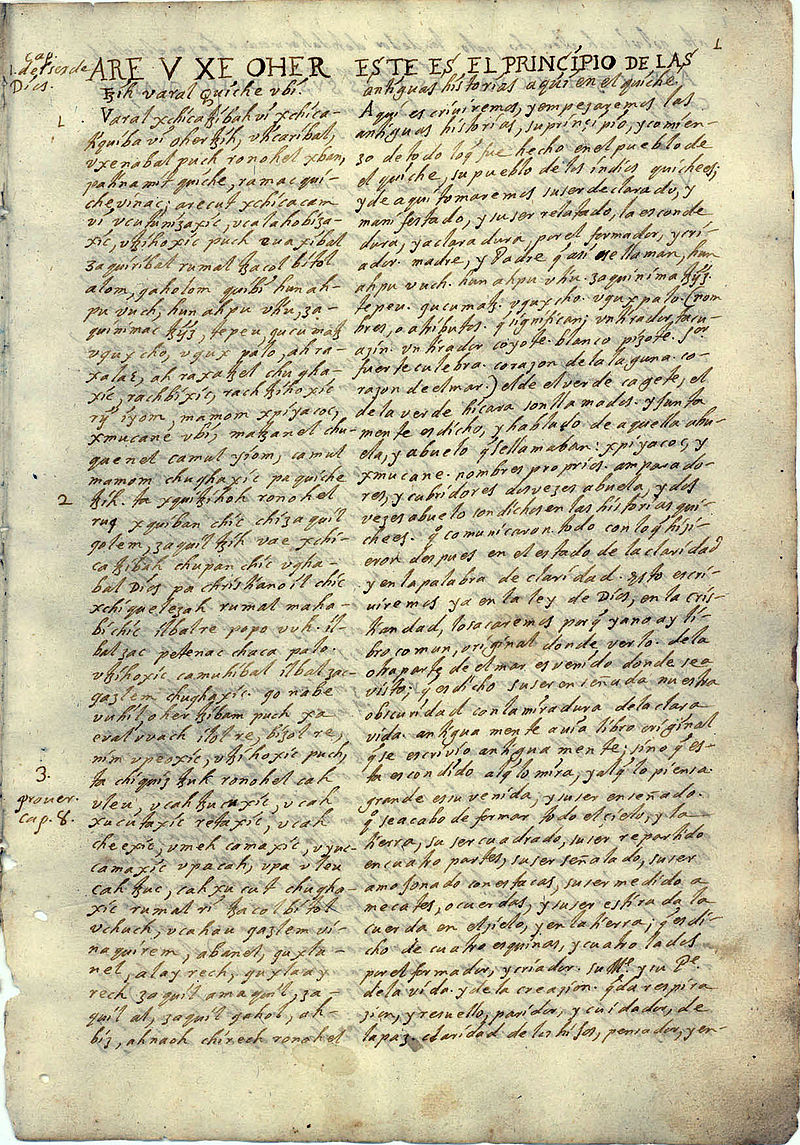
The Popol Vuh is a foundational sacred narrative of the Kʼicheʼ people from long before the Spanish conquest of the Maya. It includes the Mayan creation myth, the exploits of the Hero Twins Hunahpú and Xbalanqué, and a chronicle of the Kʼicheʼ people.
The name “Popol Vuh” translates as “Book of the Community” or “Book of Counsel” (literally “Book that pertains to the mat”, since a woven mat was used as a royal throne in ancient Kʼicheʼ society and symbolised the unity of the community). It was originally preserved through oral tradition until approximately 1550, when it was recorded in writing. The documentation of the Popol Vuh is credited to the 18th-century Spanish Dominican friar Francisco Ximénez, who prepared a manuscript with a transcription in Kʼicheʼ and parallel columns with translations into Spanish.
Like the Chilam Balam and similar texts, the Popol Vuh is of particular importance given the scarcity of early accounts dealing with Mesoamerican mythologies. After the Spanish conquest, missionaries and colonists destroyed many documents.
Spanish conquest of the Maya
Spanish colonial campaigns
The Spanish conquest of the Maya was a protracted conflict during the Spanish colonisation of the Americas, in which the Spanish conquistadores and their allies gradually incorporated the territory of the Late Postclassic Maya states and polities into the colonial Viceroyalty of New Spain. The Maya occupied the Maya Region, a territory that is now incorporated into the modern countries of Mexico, Guatemala, Belize, Honduras and El Salvador; the conquest began in the early 16th century and is generally considered to have ended in 1697.
Before the conquest, Maya territory contained a number of competing kingdoms. Many conquistadors viewed the Maya as infidels who needed to be forcefully converted and pacified, despite the achievements of their civilization. The first contact between the Maya and European explorers came in 1502, during the fourth voyage of Christopher Columbus.
Spanish Conquest of the Aztec Empire
“February 1519 – 13 August 1521 against the Aztec Empire, after 1522 – 17 February 1530 against the Tarascan state.”
So the Spanish conquered the Aztec’s about 20-30 years before they had a written record in 1550, and the Mayan’s were conquered by the Spanish about 150 years after their oral records were written?
It seems according to history, the Mayans and Aztecs had an oral tradition entirely until 1550 AD, and then wrote it down only to have ithe written history destoyed by the Spanish in 1697 AD? I think I have that correct. I don’t know what it means, but it is interesting.
I guess the conclusion of the Native Americans always having an oral history and never a written history until the Cherokee Language in 1820?
Did you also know that Onandagus and Zelph mentioned in Church History were both from New York area and the Iroquois tribe family? This is interesting we have a formerly oral language turned into a written language at the time of Joseph Smith, and Joseph Smith grew up all around the Iroquois tribes of New York? What does that mean? I don’t know but it is interesting as a comparison of the Mayan’s who had a previously oral tradition until 1550 and the Iroquois had an oral tradition until 1820.
So who are the original Lamanites? Mayan or Hopewell or Cherokee? As you can see there is no clear answer, but only study and prayer will help each of us determine the answer that appeals to each of us most. I vote that the Nephites and Lamanites are the Hopewell of the past and the Iroquois of today.
Cherokee Language
“Cherokee is an Iroquoian language, and the only Southern Iroquoian language spoken today. Linguists believe that the Cherokee people migrated to the southeast from the Great Lakes region about three thousand years ago, bringing with them their language. Despite the three-thousand-year geographic separation, the Cherokee language today still shows some similarities to the languages spoken around the Great Lakes, such as Mohawk, Onondaga, Seneca, and Tuscarora…

Before the development of the Cherokee syllabary in the 1820s, Cherokee was an oral language only. The Cherokee syllabary is a set of written symbols invented by Sequoyah in the late 1810s and early 1820s to write the Cherokee language. His creation of the syllabary is particularly noteworthy in that he could not previously read any script.”
I know this information is very biased and opinionated, but so is the information from the Mesoamerica side. You as an individual should study it out on your own of course. May the Lord bless you in any decisions that bring you closer to the Lord Jesus Christ.






